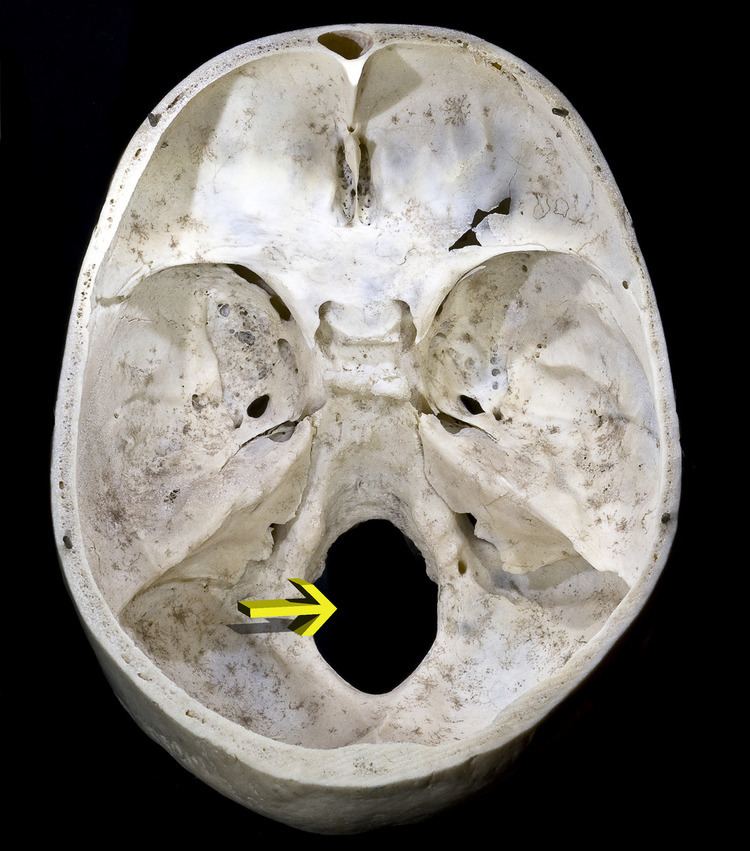Latin Foramen magnum FMA 75306 | TA A02.1.04.002 | |
 | ||
MeSH A02.835.232.781.572.434 | ||
The foramen magnum (Latin: great hole) is a large oval opening (foramen) in the occipital bone of the skull in humans and various other animals. It is one of the several oval or circular openings (foramina) in the base of the skull. The spinal cord, an extension of the medulla, passes through the foramen magnum as it exits the cranial cavity. Apart from the transmission of the medulla oblongata and its membranes, the foramen magnum transmits the vertebral arteries, the anterior and posterior spinal arteries, the tectorial membranes and alar ligaments. It also transmits the spinal component of the accessory nerve into the skull.
Contents
The opisthion is the midpoint on the posterior margin of the foramen magnum and is a cephalometric landmark. Another landmark is the basion located at the midpoint on the anterior margin of the foramen magnum.
The foramen magnum is a very important feature in bipedal mammals. One of the attributes of a bipedal animal’s foramen magnum is a forward shift of the anterior border; this is caused by the shortening of the cranial base. Studies on the foramen magnum position have shown a connection to the functional influences of both posture and locomotion. The forward shift of the foramen magnum is apparent in bipedal hominins, including modern humans, Australopithecus africanus, and Paranthropus boisei. This common feature of bipedal hominins is the driving argument used by Michel Brunet that Sahelanthropus tchadensis was also bipedal, and may be the earliest known bipedal ape. The discovery of this feature has given scientists another form of identifying bipedal mammals.
Compartments
The alar ligament which is attached on each side to the tubercle of occipital condyle on each side of Foramen magnum divides it into anterior smaller compartment and posterior larger compartment;
Other animals
In humans, the foramen magnum is farther underneath the head than in the other great apes. Thus, in humans, the neck muscles (including the occipitofrontalis muscle) do not need to be as robust in order to hold the head upright. Comparisons of the position of the foramen magnum in early hominid species are useful to determine how comfortable a particular species was when walking on two limbs (bipedalism) rather than four (quadrupedalism).
